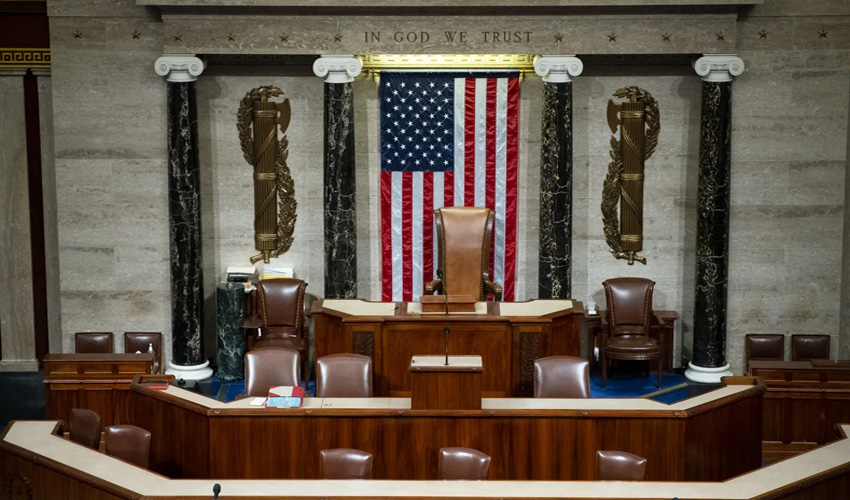With the 2024 U.S. general elections just around the corner, everyone's talking about the presidential battle between Kamala Harris and Donald Trump. Quietly within all this national noise is the high-stakes battle brewing within the U.S. House of Representatives, where control hangs precariously in the balance.
With their present narrow majority of 220 to 212, the Republicans are gearing up for what looks like a very tight and close fight in several key congressional districts that may tip the balance into Democratic hands.
Unlike the Senate, where only a third of the seats are contested, all 435 House seats are on the line this cycle and could result in a massive shift. Experts pinpoint 34 House seats as potentially vulnerable to flipping, with both parties pouring significant resources into the tightest contests. Here's a closer look at five critical races that could decide the future of the U.S. House of Representatives.
New York might be a stronghold for Democrats at the state level, but its congressional districts tell a different tale. Long Island, to take one example, is as politically diverse an area as they come, and both sides have taken home victories in the last few elections, guaranteeing another close finish here in the 4th District. The district that stretches into the rich, affluent suburbs near Manhattan has toggled between blue and red in recent years and looks to be no different in 2024.
Incumbent Republican Anthony D'Esposito, a former police detective who has been a sharp critic on the Hempstead town board, is seeking to retain his seat against Democrat Laura Gillen, a pro-enforcement candidate eager to show she's willing to fight hard for stronger border security measures. The two have carried on a bitter feud with each other since Gillen was Hempstead's supervisor. This contentious history has turned the race into a heated rematch, with D'Esposito emphasizing his record and Gillen targeting a broader appeal on crime and security.
In North Carolina's 1st District, incumbent Democrat Don Davis squares off against retired Army Colonel Laurie Buckhout in a contest that may determine whether the state's new congressional map has had too great an effect. The district is part of the U.S. South's "Black Belt," where the presence of large numbers of Black voters has traditionally given it a Democratic tilt. Yet boundary changes have left the area open to voter-dilution complaints, since several neighborhoods of color were swapped out for white-majority precincts.
The last Republican victory here dates back to 1883, and all representatives since the 1990s were Black. But in this November, it may finally be different. Davis, who comes from the Air Force veteran background and is known for a strong bipartisan stance, among many other votes against his party on various issues, goes into a tight race. With enough support built for his campaign among the more divided demographic of the district at present, the Republicans would make history by claiming that rare win.South of San Jose and abutting some of California's most affluent and trendy enclaves is one place Republicans have managed to keep an especially strong foothold-in many cases, even as-and paradoxically, because-they voted for former Vice President Joe Biden when he took the presidential vote here in 2020.
Seeing opportunity in California, President Donald Trump campaigned in Coachella Valley this October to raise support in Republican-friendly regions. Both parties have heaved their weight into the election, which is highly decisive regarding the balance of the House. Democrats are hopeful about the demographic shift where they will get a better result due to new young infusions of progressive voters to swing the momentum. Conversely, Republicans want to be in their stronghold position under changing times.
Another hotly contested race is the Washington coastal 3rd District, where incumbent Democrat Marie Gluesenkamp Perez faces Republican Joe Kent. Gluesenkamp Perez won in 2022 by only 50.1% of the vote and is looking to increase her margin this time. The Blue Dog Democrat has often voted against party lines, such as against student loan forgiveness and for temporary government funding, branding her as a centrist.
Kent, a former Green Beret and ex-Trump advisor, is a strong conservative voice on issues ranging from immigration to fiscal policy, leaving him well-positioned in this fight.
However, recent statements on working with Democrats on border security seem to signal a pivot toward the center, as he edges out in the competition for this particularly diverse district.
The at-large district is the whole state, and with Alaska's only at-large district, there are certainly electoral idiosyncrasies. There is ranked-choice voting here, one of only two in the country, and it played a pretty big role in Democrat Mary Peltola's historic 2022 win as the first Alaska Native and the first Democrat in five decades to represent the district.
He has a challenge this year, this time from Nick Begich III, a Republican tech entrepreneur and scion of an Alaskan political family. Ranked-choice voting, too, means the race might actually head to a runoff if nobody is able to secure a majority in the first round; that adds an extra layer of unpredictability. Completing the field is Eric Hafner, currently serving a prison sentence; he managed to secure his spot under the state's unconventional rules. Whether his presence makes a difference or not at the end, Begich's last name recognition is likely to be a re-election battle opponent of Peltola.



























